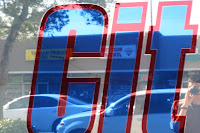Below I have two approaches. One is a more graphical approach in which there is no outside context. The other one is more reliant on the scenery. I know that people in the class liked the one on the left, but do you think that the series can have both styles and still seem unified?


Another question is about the readability of the text. Should the text be readable or should I crop the text? If the text is not readable, then the viewer must interpret the words based on the visual elements.
My last question is about one last image. This photo wasn't shown in class last time and I was wondering if it fits with the rest. I was thinking of comparing photos with text. In this photo, an old Vietnamese photo is next to graffiti text. What do you think? Does the style match the rest?








